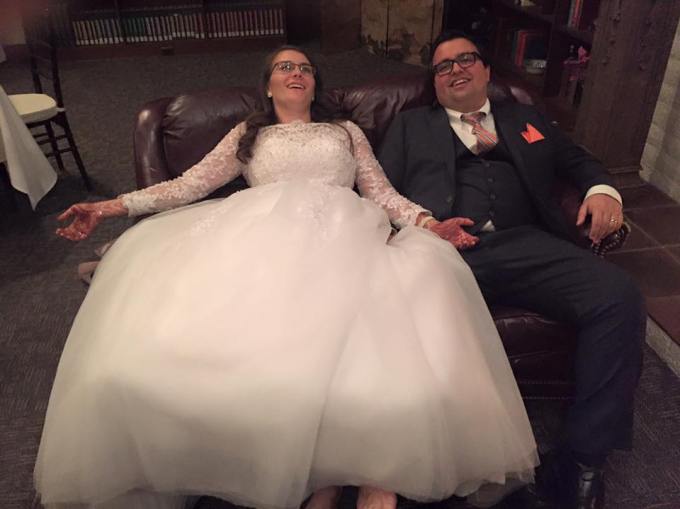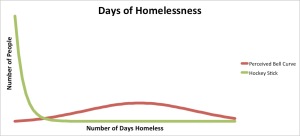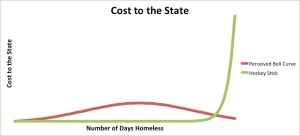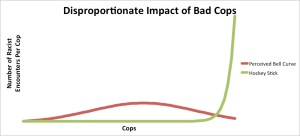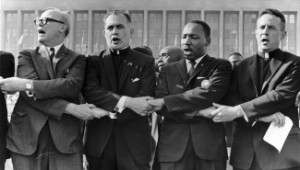It has been three weeks since I gave birth, and I think I can say that the recovery has been harder than the labor. This may seem counterintuitive, as everybody says giving birth is one of the most painful things a person can experience. Yet the defining quality of labor for me was not pain, but strength.
Like many others, I assumed that childbirth has always been thought of as painful. After all, the curse of God in Genesis is that woman will have “pain” in childbirth. When reading Natural Childbirth, I encountered an argument I had never heard before. I later checked the Hebrew myself. The word translated as “pain” can also mean simply labor or toil. In fact, the same word is used one verse later to describe how Adam will obtain food from the ground. We do not think of performing agricultural functions as painful, but rather as laborious. This is what Genesis promises of childbirth. We know that farmers are strong; we should expect the same of mothers.
After labor, I came across an incredible quote in a review of Jonathan Haidt’s latest book on the Mere Orthodoxy blog:
Many of the important systems in our economic and political life are like our immune systems: they require stressors and challenges in order to learn, adapt, and grow. Systems that are anti-fragile become rigid, weak, and inefficient when nothing challenges them or pushes them to respond vigorously. . . . [Taleb] notes that wind extinguishes a candle but energizes a fire. He advises us not to be like candles and not to turn our children into candles: “You want to be the fire and wish for the wind.”
So much of our medical system approaches pain as something to be avoided. You have a headache, so you take a pill to get rid of it. You’re going into labor, so you get an epidural. My own medical journey has convinced me that pain is meant to be a sign. As C.S. Lewis wrote, “Pain insists upon being attended to. God whispers to us in our pleasures, speaks in our consciences, but shouts in our pains. It is his megaphone to rouse a deaf world.” He was referring to spiritual deafness, but it is apt with respect to our physical health as well. I’ve had many doctors suggest various means to manage the symptoms I was experiencing, but none of them had a means to address the root cause. It was only when I addressed the root cause that the pain went away; the pain prompted me to search for deeper healing, and trying to shortcut that process would have convenient in the short term but ultimately worse in the long run. I realized whatever pain I would experience in labor must have a purpose as well. It may be easier to avoid pain, but by leaning into it, we can increase our tolerance of it.
With this philosophy, I approached pregnancy. I was striving for a natural labor with no epidural.1 I didn’t know the phrase at the time, but I wanted to be the fire and I wished for the wind.
The morning of October 5, I woke up early so that I could drive with Hirav up to his office. Based on a family history of later labors, I had suspected that we would go past 40 weeks. So I wasn’t too worried about planning a dinner in the city with Hirav’s cousins. I had felt a few contractions on the ride up, but they were incredibly mild. I had experienced Braxton Hicks contractions (i.e. the fake ones) both times we had long flights during pregnancy, and these contractions weren’t nearly as bad as those ones. Around 10:30, I started realizing the contractions were coming more consistently. There were happening every 5-10 minutes and lasting 15-30 seconds. But it wasn’t super consistent – sometimes 10 minutes, sometimes 6. They also didn’t feel very strong at all. Hirav came to meet me for lunch and saw these numbers on my laptop. “What are you doing?” he asked, but his eyes said he knew exactly what I was doing. I texted our doula Lauren, who advised waiting a few hours and timing again.
So we went about our day. I went to the Yelp Christian Fellowship meeting with Hirav over lunch where we did lectio divina. John 3:1-21 felt particularly relevant, with its discussion of being born again. Little did I know that Lucia was getting ready to be born for the first time! Then I went and ran some errands. I returned an item to my old friend George who works in the city. I went over to East Bay to return some leftover eco-friendly stain to the hardware store. I stopped in a Starbucks to do some GRE studying. In the Starbucks, I realized I should start timing again. The contractions were closer to four minutes apart, still 15-30 seconds in length until there was a 20 min gap. Definitely Braxton Hicks, I told myself! I picked up Hirav’s cousin Meghviben from the Bart station and we headed back into the city.
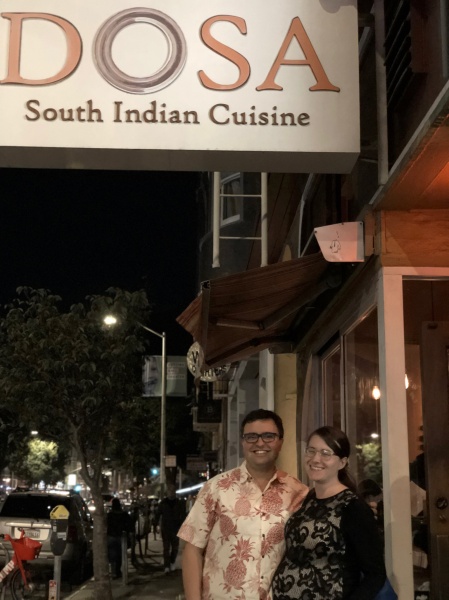
T – 4 hours or so.
On the way, I mentioned that I had been timing the contractions to see if they were real or not. She offered to drive, but the contractions were still barely noticeable. We picked up Hirav and then headed to Dosa to get dinner with Hirav’s other cousin Nikhilbhai, who was visiting from the Dallas area. After about 15 minutes, I noticed the contractions were starting to feel stronger. I began timing again, and Meghviben noticed. After another half hour, I still wasn’t sure. The contractions were sometimes 4 minutes apart, sometimes 8, varying 40-60 seconds in length. I showed my timing to Nikhilbhai, the doctor, and Meghviben, the mother of three, to see if they thought it was consistent enough. They looked at each other and said we should wrap things up quickly. Of course, we paused to take a photo before hopping in the car.
So we started driving home. I was texting Lauren to let her know we might need her tonight. My OB had said to come to the hospital when contractions were 5 minutes apart, 1 minute in length, for 1 hour. There was a short time where the contractions were 5 min apart and 1 min in length, but it didn’t last an hour. In the car, they became 4 minutes apart, 45 seconds in length, and around the same intensity. By the time, we were home, they were more like 3 minutes apart and 30 seconds in length. I never exactly hit the 5-1-1 I was looking for, so I didn’t fully realize how close I really was.
At home, there were a few things I wanted resolved. We had some boxes that hadn’t been taken down to be recycled yet. I had taken out some kitchen supplies I was planning to have Hirav put on a top shelf over the weekend. Normally I don’t boss Hirav around, but he knew this was one of those times when he should just do what I was asking. When we first got home, I put on my labor playlist full of relaxing movement. But I quickly realized that wasn’t what I wanted. Instead, we began singing.
I pulled out the hymnal that JoPo gave me in college and we sang as we picked up the apartment. We sang “Sanctuary” and recalled all of Damaris’s beautiful solos during Doxa. We sang “Take My Life” and I remembered Abigail’s beautiful renditions – of which my singing was a poor imitation. I sang “Our God, He is Alive” and thought of Allie Wunderlich and my time in the churches of Christ. With every note and every step, I was reminded of the beauty of God and the incredible journey he had taken me on.
I was content to keep going on, but Hirav began to notice subtle changes. At first, I couldn’t sing through the contractions. Then I stopped being able to walk through the contractions. “Do you think we should call Lauren?” he asked. I wasn’t sure. We never hit that 5-1-1 pattern. The pain, though getting worse, was still pretty manageable. But it seemed like this was the real deal by now, so we decided to call. I was bent over the couch, on my hands and knees. Hirav began stroking my back through the contractions, which helped a lot.
Then, I felt something that I had never felt before but that I knew immediately from every description of it: the urge to push. I realized I had perhaps waited too long. I ran the numbers in my head – this phase of labor would probably last 30 minutes minimum. The hospital was 5 minutes away. Based on her location I suspected Lauren was just a few minutes away. One contraction later, Lauren had arrived. Emily, a new doula who was shadowing her, arrived as well. After two more contractions I looked at Lauren and said we needed to go to the hospital. Hirav grabbed our bag, but there were a couple of things that we couldn’t pack up until the day we needed it (like my portable speaker or his CPAP machine to sleep).
“We’ll just wait for Hirav to pack up and then we’ll go,” Lauren said. “Could you drive me instead? Hirav can follow when he’s done,” I suggested. She immediately knew this was serious. We headed out the door as the contractions grew stronger.
We stopped in the hallway. HRRRRRRUUUUUUUUGGGGGGGGNRRRRRRRRRRRR. I grunted loudly as the wave of a contraction hit. Lauren bent over. “Lean on me” she said. The wave passed and we kept going. Down the elevator. Down the street.
I paused. HRRRRRRUUUUUUUUGGGGGGGGNRRRRRRRRRRRR. I leaned on Lauren. I wondered what the neighbors must be thinking. We got into the car and sped off. Fortunately, our hospital was just 5 minutes away. We hopped out and began walking to the labor and delivery elevator. The security guard asked if we wanted a wheelchair. I couldn’t think of anything I wanted less.
HRRRRRRUUUUUUUUGGGGGGGGNRRRRRRRRRRRR. We paused again. I leaned on Lauren. We made it to the elevator. HRRRRRRUUUUUUUUGGGGGGGGNRRRRRRRRRRRR in the elevator. We were at L&D.
The nurse said, “before we take you in, we need you to fill this out quickly.” It was a half-sheet form. I looked at her with an “are you kidding?” expression and she said, “your doula can do it.” “That’s OK” I said and began filling it out. I made it through my name and social security number, but gave up at the address. “You have the rest,” I said. She complied and we headed down the hallway.
HRRRRRRUUUUUUUUGGGGGGGGNRRRRRRRRRRRR. We paused. I whispered to Lauren that I felt the burning. In the descriptions of natural labor, women describe feeling “a ring of fire.” Again, I knew immediately from the description that this is what was happening. We were very close.
We made it to the room, but the hospital was so busy it wasn’t ready. A slew of nurses filed in and began arranging things. They hadn’t closed the door or the privacy screen, but I dropped my pants and hopped on the bed. I faced the wall and stayed on my hands and knees. I’m normally a modest person, but instincts took over. I knew what I needed to do.
The order here is a little fuzzy.
“Can we check you?” they asked. They wanted to know how far dilated I was. They started to check, but it hurt worse than the contractions did. “That hurts, can you please stop?” I asked. So they did. I didn’t need them to tell me I was 10 cm and ready to push. I knew I was ready to push.
“Did you test positive for Group B Strep?” another nurse asked.2 “Yes,” I said. “We need to do antibiotics,” she replied. “No.” I knew in that moment that we had less than the 4 hours needed for antibiotics to be most effective, and I couldn’t even imagine processing them trying to put an IV in at that moment.
“Did your water break?” they asked. “I’m not really sure,” I replied. I knew that water breaking can take the form of a slower leak, and I felt like that might have happened.
Another nurse tried to strap the fetal monitors around my belly, but that also felt weird and a little painful. “That’s uncomfortable. Can you not do that?” I asked. The nurse was clearly uncomfortable, but agreed. She held the monitors to my belly instead.
My water broke. It was very clear. I felt a big gush and it running down my legs. Now I knew what that felt like as well.
Meanwhile, with each contraction, Lauren was rubbing my back like Hirav had been. In the pauses between contractions, she wiped my face with a cold damp cloth. Each contraction was certainly painful, but I didn’t realize that the moments in between contractions would be basically pain free. It was bizarre to go from totally immersed in a contraction – the urge to push, the burning feeling, sensing the head dropping lower and lower – to feeling total normal and like nothing was happening.
At some point, Hirav arrived and put on my labor playlist. The angelic melodies of the Benedictines of Mary filled the room in between my grunts. In the pauses, I appreciated the calming music. A nurse would pull him aside to have him complete the intake. Fortunately, Lauren had given us a list of questions in advance so we were well-prepared.
Dr. Hoff arrived. “Can I check you?” he asked. “Sure.” But again, it was too painful. “That hurts. Could you please stop?” I asked. So he stopped. “How far along is she?” the nurse asked. “You know, I’m not used to this position. I’m not really sure…” he said. “Great…” I thought to myself. At least he would be getting more experience with a woman in this position, I realized.
So it went on for a little while. Pushing hard. Having a calm, cool moment. Pushing hard again. It was a confusing feeling, as I could sense the head coming down with the contraction and then getting pulled up again with the pause. As we neared the end, I was getting tired. I didn’t want the head to keep going back in again. I just wanted the baby out! Finally there was a pause where the head didn’t pull back again. I didn’t quite know what to do with that. So the head was held there, and with another contraction or two, the head finally came out all the way. Once the head was out, the rest of the baby – the shoulders, the belly, the feet – slide right out. I could feel all the different parts pass through: the pointy width of the shoulders, the softness of the belly, the legs long and together like a fin. Lucia was born at 11:51 am on October 5, 2018.
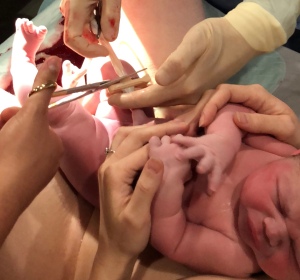
- Hirav cut the cord.
Hirav said she burst out. He saw the head, turned away for a moment, and the entire baby was there. I tore off my shirt as they wiped the baby off quickly. When they placed her on my chest for skin to skin, I couldn’t believe she was mine. She seemed too big to fit inside me. But I saw the umbilical cord was still attached so I knew she was mine. We had opted for delayed cord clamping so they waited a few minutes before clamping the umbilical cord. Then they handed Hirav a pair of scissors.
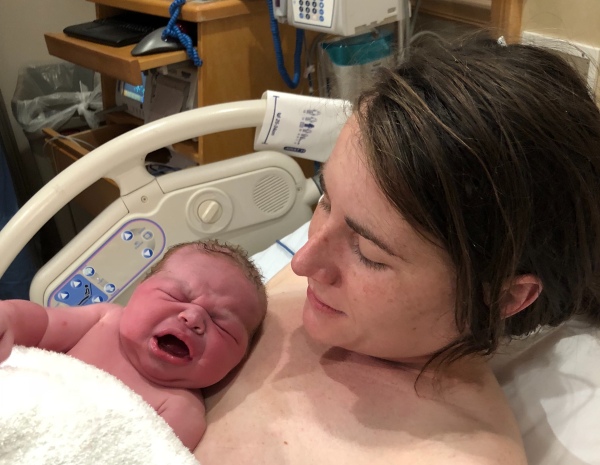
- Lucia, just minutes after birth.
After cutting the cord, they turned their attention to me. I had a third degree tear which required a lot of stitches. They were also worried I was losing too much blood. Dr. Hoff wanted me to take pitocin to reduce the bleeding. All the facts about pitocin and hospital procedures began running through my head. I had no serious concerns about pitocin after labor, but I had just come off a run of saying no to pretty much everything except pushing. Hirav looked at my face, and then looked at the blood. “You’re losing a lot of blood,” he said. I agreed to the pitocin. I was grateful to have such a good husband there in that moment. He knew what I wanted, what we both wanted, and he knew I was just feeling indecisive in that moment. He urged me to do the right thing, in the right way, at the right time. I lost almost a liter of blood, but I thankfully didn’t require a transfusion.
Next they needed to stitch me up. But even getting the shot of local anesthetic hurt. “Could we wait a little bit?” I asked Dr. Hoff. He had a concerned look, but agreed and disappeared for a bit while the nurses hung out. After 10 or 15 minutes, I asked for him to come back to finish the stitches. Even though you can’t feel the threading because of the anesthetic, you can still feel the string getting pulled through your skin like a piece of cloth. It’s a very weird and uncomfortable feeling. I had Hirav and Lauren squeezing my shoulders through the procedure, which lasted a frustratingly long half hour. The counter pressure helped take the focus off the pain.
I don’t remember exactly when, but at some point, I turned to Hirav and said, “You know, I could do that again.” The nurses looked a bit agape, like “Can you believe this lady?” The doulas also gave one another a look that more resembled amusement. “Maybe I should wait for after the recovery to say that…” I paused.
The nurses left and baby Lucia chilled on my chest for a while. Although some babies actually manage to latch and start breastfeeding in the first hour or two of skin to skin, Lucia didn’t. After a half hour, I realized that her skin was a bit clammy and cold. Lauren went out to go get a nurse. There ended up being 6 births in the hospital that night, so there were no nurses outside. We pressed the call button and a nurse came in. They put Lucia under a warmer in our room. We later realized that the AC had been turned up in the room during labor and this had made both her and I very chilly. She also was such a big baby that she had low blood sugar. She ended up being 9 lbs, 4 oz and 20 inches long. They gave her some formula to help get her blood sugar up, and encouraged me to continue feeding her at the breast and to pump as well.
After we were settled in, the doulas Lauren and Emily went home for the night. They advised that I get some rest. I was concerned, however, that the nurses weren’t coming in to check on us as regularly because things were so busy. Because we hadn’t gotten the antibiotics, I was nervous that no one would be checking her enough for the signs of Group B Strep. So I ended up staying awake most of the night watching her, making sure she was comfortable and checking her temperature every hour or so. She was totally fine.
That afternoon, she was ready for her first family visitors. The next afternoon, we headed home.
In retrospect, I couldn’t have asked for a much better birth. Not everything went according to plan, but most of it was pretty close. I wanted to feel everything and to be able to follow my instincts, and they kicked in just as I had hoped. I wanted to know whether labor was really as painful as everyone said, and it wasn’t nearly as bad as I had feared. (Until the last hour or two, the pain was about as intense as my last worst bout of IBS-C related abdominal pain. So I think men can probably experience things more painful than labor.) Being able to do something about the pain makes the entire experience more manageable. Knowing that it won’t last forever also helps.
Most of all, I’m grateful for the team of support that I had. I’m grateful for Hirav’s strong hands that massaged me and sound mind that guided me through the labor process. I’m grateful for Lauren and all her wisdom and help, and for Emily’s extra assistance. I’m grateful for Dr. Hoff living so close to the hospital that he still managed to make it to our whirlwind birth. I’m grateful for the Benedictines and their angelic voices, for our friends who were with me in song, for those who wrote such powerful words that granted me peace throughout the labor. I’m grateful to God who created Lucia, and who used my suffering over the past few years to teach me to manage pain rather than to simply avoid it. I’m grateful that God made childbirth a process of labor – that it might manifest my strength as a woman just as tilling the fields may show a man’s power.
In the past few weeks as I’ve been recovering, we watched the movie A Quiet Place. I have concluded that Emily Blunt is my new favorite icon. Many movies are deemed feminist because they show women fighting like men. To me, this is rather anti-feminine because it is forcing women into men’s roles even if they don’t fit. I won’t pretend the average woman can wield a sword with the upper arm force of the average man. I admired Blunt’s performance because she managed to convey the incredible strength and majesty of being a woman with a feminine grace and a calm control. Hers is a quiet strength, no less powerful than her husband’s, but nevertheless different from his as well. Both genders must labor, but in their own unique way.
After giving birth, I emerged feeling that I could do anything. Labor was a strong wind to ignite the fire within. In the Gospel of John, Jesus describes his cousin John the Baptist, saying, “He was a burning and shining lamp, and you were willing to rejoice for a while in his light” (Jn 5:35). I share this testimony of Lucia’s birth that I may be a burning lamp as well, giving witness to the grace and power of God.
It is fitting, then, that we named her Lucia which means light in Latin. We chose the name for St. Lucia and for Lucy from The Lion, the Witch, and the Wardrobe. Her middle name is Amantia means loving and was chosen to honor my maternal grandmother. We hadn’t been certain of the middle name, but Hirav felt in the hospital that she was a Lucia Amantia. I like to think it’s because she looked like a grumpy hedgehog just like my ornery grandma. In these few short weeks, Lucia Amantia has already brought much light and love into our world.

Her sleepy little self.

Our little grumpy hedgehog.

The Thinker

Waxing philosophical already.
[1] Why I Wanted to Avoid an Epidural
My medical history made me very concerned about the prospect of an epidural. For one, I have had a pretty severe aversion to needles since childhood. Although it has gotten much better in recent years, I nevertheless have a history of fainting and even seizing around needles. In recent years, the fainting has been confined to blood draws while fasting and with larger draws, but I was still apprehensive about the epidural because it would require being hooked up to an IV during labor. Secondly, I have been on medical journey the past three years that has made me feel a reasonable amount of anxiety about being in the hands of medical professionals. I have been misdiagnosed, had symptoms patronizingly dismissed, and been given bad advice from a number of different specialists.
One moment that particularly stood out was the first time I had a severe allergic reaction that required hospitalization. I had passed out in the street on the walk home with my roommate Amy. She called an ambulance and on the ride to the hospital, I was passing in and out of consciousness. There are three distinct memories I have from that day. First, in the ambulance, I specifically told the EMT that I wanted to go to Cambridge Hospital. I made this choice because it was closer to my apartment so it would be easier to get home afterward. The EMT told me “Mass Gen is really better for this kind of stuff.” Highly suggestible in that state, I said “fine” before conking out again. One thing worth noting is that Mass Gen is also more expensive than Cambridge Hospital. Although I had decent insurance, that single trip to the ER ended up wiping out a good chunk of my savings that year (almost 10% of my salary post tax).
I woke up again in the hospital and overheard the doctor asking my roommate questions. On the walk, we had been discussing why I was feeling so itchy and my medical history. She was the doctor’s best source of information at that point, but the doctor didn’t seem to listen to her. The doctor asked her whether there was any possibility I was pregnant. My roommate said “no, absolutely not” since she knew I was not sexually active. The doctor seemed disinclined to believe her. I mumbled back “immaculate conception” – which I seemed to find much funnier than the doctor did. [I’m sorry, theologian friends. I know I should have said virgin birth for utmost accuracy, but I wasn’t exactly myself.] The doctor asked me what I had eaten that day and I told her. She said “it must be the almonds” that were in my salad. I told her that didn’t make any sense as I ate a lot of almonds in my office almost every day. By my admittedly hazy recollection, she didn’t respond to this or offer any other suggestions.
I was afraid of an epidural because I was concerned that I would be more suggestible in that state. As I thought more about the birth, I realized that I no longer feel safe in the hands of doctors. That’s not to say that I don’t trust doctors – Hirav and I know so many physicians that we respect greatly. It’s just that I’ve come to learn very intimately how fallible doctors can be and I like asking questions because doing so can help an expert reach better conclusions. Ultimately, I felt that a birth without pain medication would leave me in better control of my medical decisions and less susceptible to suggestion.
I also wanted to avoid a C-section unless it was absolutely necessary. The C-section rate in California is over 30%: the World Health Organization recommends a rate of 10 to 15%. I worried that nudge factors in the hospital would make me more likely have a C-section, especially if I had a bad reaction to the epidural needle. Hirav and I hope to have many more children, so it seemed particularly prudent to have a vaginal birth to kick things off. If I had a C-section this time, I would have to fight harder to have a VBAC (vaginal birth after caesarean) for the next 3+ pregnancies. After much consideration, we decided to hire a doula to help reduce our risk of C-section and to help play the role of slowing down the decision making process (i.e. helping us question the experts to reach optimal decisions).
[2] Group B Strep and Birth Plans
We’ve mentioned having a birth plan to a few friends. The common reaction is “birth doesn’t go according to plan!” That reaction makes sense if you think a birth plan is something like “and then labor will last 10 hours and I’ll get the epidural when I’m exactly 7 cm dilated” and so forth. But a birth plan is more like a contingency plan where you think through your priorities and goals. For us, the birth plan included some medical decisions that were certain – such as skipping the erythromycin ointment since we had zero risk of siphyllitic or gonherral blindness. (As a public health decision, this makes more sense because patients may be engaging in risky behavior and not reporting it.)
Another part of the plan that was nearly guaranteed to happen was Hirav cutting the cord. Other parts of the plan were more like values that we had: we only want a c-section if it is medically necessary. We would prefer intermittent monitoring over constant monitoring. Because I tested positive for Group B Strep, we would be getting antibiotics for sure if I gave birth before 39 weeks. By thinking through these questions in advance, we weren’t surprised by anything that happened in the labor and delivery room. We weren’t making major decisions on the fly, but had considered what circumstances would cause our priorities to shift.
Of course, the labor process didn’t go exactly as planned. For example, Hirav had planned during the early part of labor to take a break to get animal fries from In-N-Out, but we weren’t sure if I really was in labor until we had already eaten dinner and Hirav had no room for animal fries. (Don’t worry, he got them on the ride home from the hospital!) We had planned to get the antibiotics, but I was already pushing when I arrived at the hospital. I knew this meant we had less than 2 hours before baby would be born. In that moment, I felt I wouldn’t be able to handle the insertion of an IV for antibiotics. I knew I needed to focus on pushing. But because I had done my research, I also knew that the antibiotics wouldn’t be as effective with less than 4 hours. That gave me a greater confidence in asking them to not administer the antibiotics as planned. We would just have to do closer monitoring post-labor, which is recommended for women who get less than 4 hours of antibiotics. I had also been taking probiotics that were found in one study in Taiwan to reduce Group B Strep in pregnant women before labor. We were hoping to retest at the 39 week appointment to see if I could avoid the antibiotics. I’m grateful now that we had this plan in place, even if I can’t be sure the probiotics really helped.
After our experience, I would recommend that every pregnant woman write up a birth plan. The greatest plans of mice and men may oft go awry, but you can plan to adapt as well. You outline what your options and preferences are in advance so you aren’t shocked or making as big of decisions during one of the biggest moments of your life.










